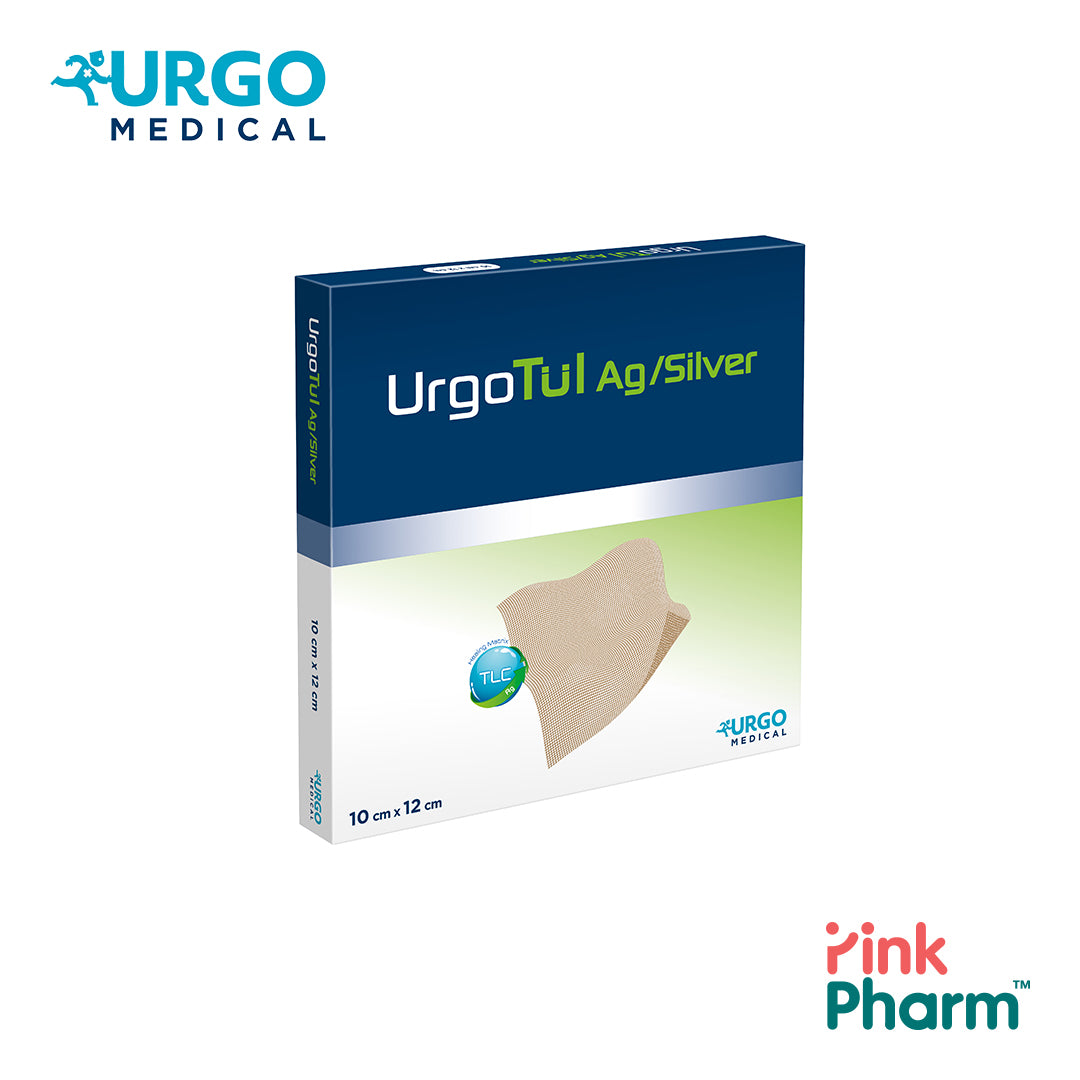
Description
UrgoTul® Ag is an antibacterial non-adhesive, non-occlusive contact layer, composed of
a sterile polyester mesh coated with TLC-Ag healing matrix (TLC-Ag: Technology Lipido-Colloid, composed of carboxymethylcellulose particles, lipophilic substances and silver salts).
INDICATIONS :
UrgoTul Ag/Silver is the effective antimicrobial contact layer to fight against local infection and is indicated for the local treatment of wounds at risk or with signs of local infection, including:
- Leg ulcers, diabetic foot ulcers, pressure injuries (chronic wounds)
- Partial thickness burns, dermabrasions, traumatic wounds, surgical wounds
- Due to the non-adhesive nature of the dressing, UrgoTul Ag/Silver is also recommended in the treatment of wounds
- with friable peri-lesional skin.
- Non to low exuding wounds
- Can be combined with a secondary dressing
- Can be used in cavity wounds
BENEFITS:
In contact with wound exudates, the hydrocolloid particles gel and combine with the matrix to form a lipido-colloid film. This helps maintain a moist environment that promotes healing. The inclusion of the silver salts create an antimicrobial barrier to reduce the risk of infections.
Antimicrobial Efficacy :
- Fast and broad-spectrum antimicrobial efficacy, including on strains resistant to antibiotics such as MRSA, VRE, ESBL.
- Superior clinical efficacy of the TLC-Ag in reducing signs of local infection and in promoting healing1 : proven to reduce signs of local infection and promote healing for wounds with signs of local infection with a superior WAR at W7 (-47,9% vs. -5,6%, p=0,036).
Comfort : Creates a moist wound healing environment
- Atraumatic and pain-free at removal due to the TLC-Ag healing matrix
- Easy to use with sustained antimicrobial effect for up to 7 days
- Flexible and conformable, ideal for hard to dress wounds
- Safe & Well-tolerated
INSTRUCTION for Use :
(references)
- Lazareth I, et al. The role of a silver releasing lipido-colloid contact layer in venous leg ulcers presenting inflammatory signs suggesting heavy bacterial colonization: Results of a randomized controlled study. Wounds. 2008;20(6):158–66.


